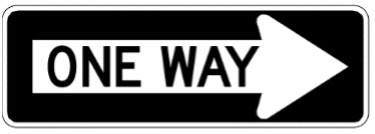Subsection 3.4.6 Inference Rules Are One Way Streets
Notice an important difference between the identities that we proved in the last section and the inference rules that we’ve proven here. In the case of the identities, we show that:
p ≡ q
This claim is symmetric. Substitution can go in either direction. Since p and q have identical truth values, either can be substituted for the other in any logical expression without changing the expression’s truth value.
That’s not the case for the inference rules. For them, we’ve proved only that:
antededents → conclusion

Generally one side is stronger (true in more circumstances) than the other. So inference just goes in one direction.
Here’s a simple example of this. Recall the Simplification rule and the tautology that proves its soundness:
\(p \wedge q \)
p So we can start with:C K Chris and Kate are coming to the party.
And conclude:
C Chris is coming to the party.
But we cannot start with C and conclude \(C K.\)
Exercises Exercises
1.
1. Give names to the following statements:
C : There will be cake for dessert.
P : There will be pie for dessert.
CH : There will be chocolate for dessert.
Assume the following premises:
[1] C ∨ P There will be cake or pie for dessert.
[2] C → CH If there’s cake it will be chocolate.
We wish to prove:
CH There will be chocolate for dessert.
Here’s a proposed proof:
[1] C ∨ P Premise
[2] C → CH Premise
[3] C We apply Addition to [1].
[4] CH We apply Modus Ponens to [2] and [3].
Which of the following claims is true of this proof? If you think that the proof is wrong, indicate the first place where a mistake is introduced.
It is a valid proof.
It is not valid. Line 3 is a valid conclusion but the reason given is wrong.
It is not valid. Line 3 is not a valid conclusion.
It is not valid. Line 4 is a valid conclusion but the reason given is wrong.
It is not valid. Line 4 is not a valid conclusion.
